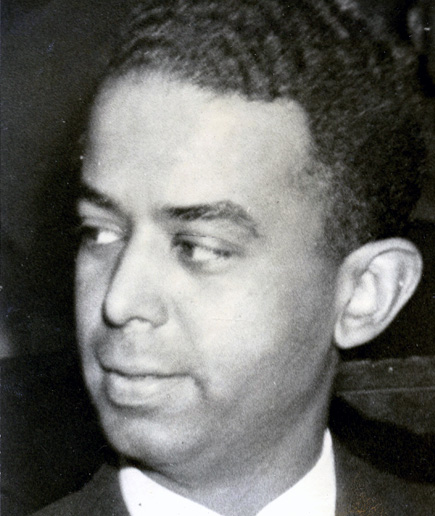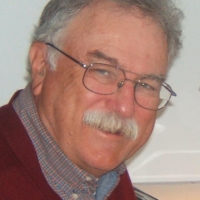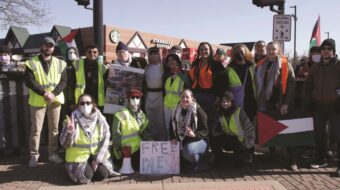
BALTIMORE – I got to know George B. Murphy, Jr. during the 25 years I commuted from Baltimore to Washington D.C. covering the capital for the Daily World newspaper, now the People’s World online daily. His long career as a fighting, pro-people journalist made a deep impression on me. He was a thin, lively, pipe-smoking man with a ready wit active in many struggles for world peace and equality in the nation’s capital.
I commuted by Greyhound Bus and one Friday evening I caught sight of Murphy, also waiting in line. He was on his way to Baltimore to meet with the editors of the Baltimore Afro. We sat together and he regaled me with stories about his friendship with Dr. W.E.B DuBois and his wife Shirley Graham; the singer and freedom fighter, Paul Robeson and his wife Eslanda Goode Robeson. We ran into each other at the bus depot several times after that and always sat together on the ride to Baltimore.
George B. Murphy, Jr. was born in 1906 into one of Maryland’s most influential families, son of the publisher of the Baltimore Afro American newspapers. Murphy served as Editor in Chief of the Washington Afro American in the late 1940s and early 1950s.
Murphy was the Afro American’s correspondent in Harlem during the 1930s when he met and befriended Benjamin J. Davis, helping in his successful campaign for a seat on the New York City Council, the “first Communist Councilman from Harlem.”.
Murphy was then immersed in the work of the NAACP, listed in the NAACP archives as a “principal correspondent” in many of the organization’s activities alongside Thurgood Marshall, later the first African American Supreme Court Justice, the great contralto, Marian Anderson and other leaders.
Yet Murphy was frustrated that the NAACP was not coming to the aid of struggling African American workers facing hunger, even outright starvation. Instead of mass mobilization to fight Klan lynchings and frame-ups such as the Scottsboro Nine, the NAACP at that time opted for narrow, legalistic strategies. It was the International Labor Defense, chosen by the mothers of the Scottsboro Nine, that spearheaded that nationwide and worldwide campaign that saved them from execution on false charges of raping two white women near Scottsboro Alabama Mar. 25, 1931.
On Jan. 6, 1941, George B. Murphy Jr. resigned from the NAACP and joined the National Negro Congress (NNC), founded in Chicago in 1935 to fight for a bigger share of New Deal programs for the African American people. The NNC was working with the CIO and the rest of the labor movement, a coalition strategy that Murphy saw as key to winning equal rights.
In 1950, Murphy was the campaign manager in Dr. DuBois’ run for a U.S. Senate seat from New York. In his autobiography, Dubois writes that he was an “indicted criminal” accused by Cold War witch-hunters of being an “agent of a foreign power” in his role as Executive Director of the Peace Information Center.
Despite the red-baiting and frame-up drive, the DuBois Senate campaign organized election rallies of 1,000 to 2,000 people all across New York State culminating in a rally at Madison Square Garden attended by 17,000 people.
By then Murphy had joined the Civil Rights Congress (CRC), led by his friend William L. Patterson The CRC fought to save the lives of the Trenton Six, the Martinsville Seven, and Willie McGee, all victims of frame-up and Jim Crow “justice”
Murphy was a signer of the CRC’s famous “We Charge Genocide” petition hand delivered to the UN in New York by Paul Robeson and in Paris by Patterson on Dec. 17, 1951. The petition accused the U.S. government of culpability in genocide against the African American people defined in the UN Charter as “any intent to destroy, in whole or in part, a national, racial, or religious group …”
Appended to the petition was massive documentation of lynchings, beatings, outright or near starvation, denial of emergency medical care, and brutal discrimination inflicted on Black workers and sharecroppers. The Federal government had done nothing to halt this racist onslaught and many government officials gave it tacit and sometimes open encouragement.
Much of the evidence in the petition was drawn from the Washington Afro, a newspaper then edited by Murphy.
In a cold fury, Dixiecrats and rightwing Republicans shrieked that the signers were traitors. Murphy was summoned by the witch-hunt House Un-American Activities Committee (HUAC) in 1952, amid hysterical claims he was a “communist.” His legal counsel was his brother, William H. Murphy Sr. later elected as a Maryland District Court judge. George B. Murphy Jr. was unflinching in the face of the racist witch-hunters. He was called again before HUAC in 1956 as an active member of the American Committee for the Protection of the Foreign Born, a group fighting the mass deportation of immigrant union workers.
A couple of years ago, I heard George B. Murphy, Jr.’s niece, Laura Murphy, Legislative Representative of the American Civil Liberties Union speak at a conference in Washington. She delivered a passionate defense of the Bill of Rights, assailing repressive laws like the Patriot Act.
Afterwards, I introduced myself as a close friend of her uncle. She beamed, shook my hand, and told me of her warm feelings for him and expressed a daughter’s pride that her father had defended her uncle during the HUAC witch-hunt.
Murphy was undaunted by the Cold War repression. He was the vice chairman of the Paul Robeson Friendship Society during the 1970s, working with the beloved Josephine Butler to promote peaceful coexistence. (Daughter of sharecroppers and granddaughter of people who were enslaved, Butler (1920-1997) was one of inner-city Washington D.C.’s most respected community leaders.) Murphy had traveled to the Soviet Union. What he saw there made him a lifelong believer in socialism.
In Sept. 1975, the Society hosted the World Peace Council conference with 200 delegates from across the U.S. and around the world. It included labor, communist and socialist members of parliament from Mexico, Great Britain and other nations. They held meetings with several members of the U.S. Senate and House. Murphy helped organize it.
He was a leader of the National Alliance Against Racist and Political Repression and had served on the Free Angela Davis Committee.
George B. Murphy Jr. died at Howard University Hospital Nov. 29, 1986.
In the book “Paul Robeson: The Great Forerunner,” Murphy wrote that Robeson understood the role of a people’s artist “in the struggle of workers, especially Black workers, against American capitalist exploitation, in the struggle of the people of South Africa and throughout the vast continent to reclaim for themselves … the immense treasure of their earth.” Murphy too understood and joined in that struggle with all his heart.
Photo: George B. Murphy, Jr. Daily Worker/Daily World Photographs Collection, Tamiment Library, New York University

MOST POPULAR TODAY

High Court essentially bans demonstrations, freedom of assembly in Deep South

Zionist organizations leading campaign to stop ceasefire resolutions in D.C. area

U.S. imperialism’s ‘ironclad’ support for Israel increases fascist danger at home


UN warns that Israel is still blocking humanitarian aid to Gaza






Comments